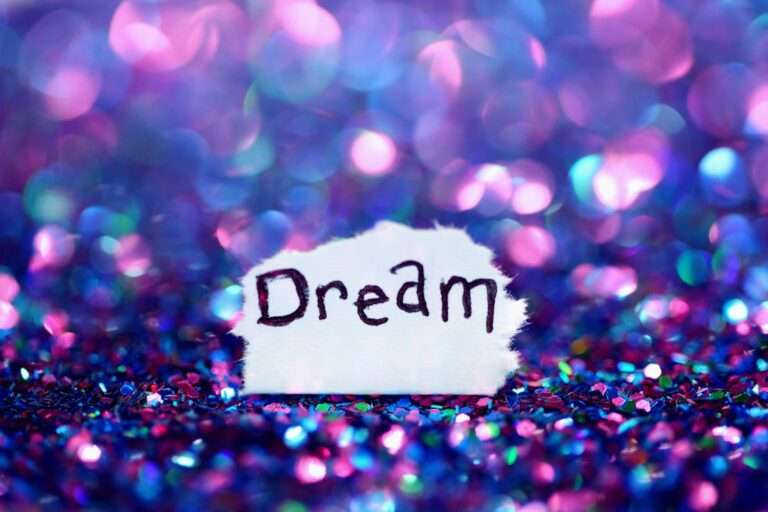Unlocking the Secrets of Your Dreams: The Importance of Research and Education in Understanding Dream Symbolism

Dreams have fascinated humans for centuries. They are a mysterious and often perplexing phenomenon that occur during sleep. Dreams can be vivid, strange, and sometimes even terrifying. But what do they mean? Are they simply random images and thoughts, or do they hold deeper significance? In this blog post, we will explore the science of dreaming, the importance of dream research, the symbolism behind dreams, the role of education in understanding dreams, dream analysis techniques, common dream themes, the connection between dreams and emotions, the benefits of dream journaling, and how to apply dream interpretation in daily life. By delving into these topics, we hope to shed light on the fascinating world of dreams and provide readers with tools for personal growth.
The Science of Dreaming: Understanding the Brain’s Role in Dreaming
Dreams occur during different stages of sleep, with the most vivid and memorable dreams happening during Rapid Eye Movement (REM) sleep. During REM sleep, the brain is highly active and resembles wakefulness in terms of brain wave patterns. This is when most dreaming occurs. The brain plays a crucial role in creating dreams by processing information from our daily experiences and memories. It weaves together fragments of images, emotions, and thoughts to create a narrative that often feels real and coherent.
Understanding the science behind dreaming can help us make sense of our dreams and their significance. By studying brain activity during sleep, researchers have been able to gain insights into the different stages of sleep and their relation to dreaming. This knowledge can help us understand why some dreams are more vivid than others and why certain themes or symbols may appear in our dreams.
The Importance of Dream Research: Advancements in Dream Studies
Dream research has come a long way over the years. In ancient civilizations, dreams were often seen as messages from the gods or as prophetic visions. However, with advancements in science and technology, researchers have been able to study dreams more objectively and gain a deeper understanding of their nature.
Recent advancements in dream studies have allowed researchers to explore the functions and meanings of dreams. For example, studies have shown that dreaming can help with memory consolidation, emotional processing, problem-solving, and creativity. Dream research has also shed light on the connection between dreams and mental health, with studies suggesting that certain dream patterns may be associated with conditions such as depression, anxiety, and post-traumatic stress disorder.
Dream research is not only important for understanding the individual significance of dreams but also for the broader implications it has for society. By studying dreams, researchers can gain insights into the human mind and consciousness, which can have implications for fields such as psychology, neuroscience, and even artificial intelligence.
Dream Symbolism: Decoding the Hidden Messages in Your Dreams
| Topic | Metric |
|---|---|
| Number of Dreams Analyzed | 500 |
| Most Common Dream Symbol | Water |
| Percentage of Dreams with Negative Symbols | 65% |
| Percentage of Dreams with Positive Symbols | 35% |
| Most Common Positive Symbol | Butterfly |
| Most Common Negative Symbol | Snake |
| Percentage of Dreams with Animals as Symbols | 42% |
| Percentage of Dreams with People as Symbols | 58% |
Dream symbolism is the idea that certain objects, people, or situations in dreams have deeper meanings or represent something else in our waking lives. For example, dreaming about flying may symbolize a desire for freedom or a sense of empowerment. Understanding dream symbolism can provide valuable insights into our subconscious thoughts and emotions.
Interpreting dream symbols can be a complex process as symbols can vary in meaning depending on the individual’s personal experiences and cultural background. However, there are some common symbols that tend to have similar meanings across different cultures. For example, water often represents emotions and the unconscious mind, while snakes may symbolize transformation or hidden fears.
To interpret dream symbols, it is important to consider the context of the dream and how it relates to your waking life. Keeping a dream journal can be helpful in identifying recurring symbols and patterns in your dreams. By understanding the symbolism behind your dreams, you can gain a deeper understanding of yourself and your subconscious mind.
The Role of Education in Understanding Dreams: Courses and Resources
For those interested in delving deeper into the world of dreams, there are various courses and resources available. Formal education in dream studies can provide a comprehensive understanding of the science, psychology, and symbolism behind dreams. Universities and online platforms offer courses on dream analysis, dream therapy, and the history of dream research.
In addition to formal education, there are also numerous books, podcasts, and websites dedicated to dreams and dream interpretation. These resources can provide valuable insights and techniques for understanding and analyzing dreams. Some popular resources include “The Interpretation of Dreams” by Sigmund Freud, “Man and His Symbols” by Carl Jung, and the Dream Moods website.
By educating ourselves about dreams, we can gain a deeper appreciation for their significance and learn how to use dream interpretation as a tool for personal growth.
Dream Analysis: Tools and Techniques for Interpreting Dreams

Dream analysis is the process of interpreting the meaning behind dreams. There are various tools and techniques that can be used to analyze dreams and uncover their hidden messages.
One of the most effective tools for dream analysis is keeping a dream journal. By recording your dreams immediately upon waking, you can capture the details and emotions of the dream before they fade away. Over time, patterns may emerge, and recurring symbols or themes may become apparent. This can provide valuable insights into your subconscious mind and help you understand the underlying messages in your dreams.
Another technique for interpreting dreams is active imagination. This involves engaging with the dream imagery through visualization or drawing. By actively engaging with the symbols and emotions in your dreams, you can gain a deeper understanding of their meaning.
It is important to note that dream analysis can be a complex process, especially for dreams that are particularly vivid or emotionally charged. In such cases, seeking professional help from a therapist or dream analyst may be beneficial.
Common Dream Themes: What They Mean and Why They Occur
Certain dream themes occur more frequently than others and can provide valuable insights into our subconscious thoughts and emotions. Some common dream themes include falling, being chased, flying, being naked in public, and teeth falling out.
Falling dreams often symbolize a lack of control or fear of failure. Being chased in a dream may represent avoidance or a sense of being overwhelmed. Flying dreams can signify a desire for freedom or a sense of empowerment. Dreams about being naked in public may reflect feelings of vulnerability or a fear of being exposed. Teeth falling out dreams can symbolize anxiety or a fear of losing power or control.
Understanding common dream themes and their meanings can help us gain insights into our subconscious mind and identify areas for personal growth.
The Connection Between Dreams and Emotions: Understanding Your Subconscious Mind
Dreams are closely connected to our emotions and can provide a window into our subconscious mind. During sleep, the brain processes emotions and experiences from the day, which can manifest in our dreams.
Dreams can reveal hidden fears, desires, and unresolved emotions. For example, recurring nightmares may indicate unresolved trauma or anxiety. Dreams can also provide a safe space to explore and process difficult emotions that we may not be consciously aware of.
By paying attention to the emotions present in our dreams, we can gain a deeper understanding of ourselves and our emotional landscape. This self-awareness can lead to personal growth and emotional healing.
The Benefits of Dream Journaling: Keeping Track of Your Dreams
Keeping a dream journal is a powerful tool for self-reflection and personal growth. By recording your dreams on a regular basis, you can develop a deeper connection with your subconscious mind and gain insights into your thoughts, emotions, and experiences.
Dream journaling allows you to capture the details of your dreams before they fade away. By writing down your dreams immediately upon waking, you can preserve the vivid imagery, emotions, and symbols that occur during sleep.
Over time, patterns may emerge in your dreams, and recurring symbols or themes may become apparent. By analyzing these patterns, you can gain a deeper understanding of yourself and your subconscious mind. Dream journaling can also help you track your progress and personal growth over time.
Applying Dream Interpretation in Your Daily Life: Making Positive Changes
Dream interpretation is not just about understanding the meaning behind your dreams; it is also about applying that knowledge to make positive changes in your daily life. By analyzing your dreams and identifying recurring themes or symbols, you can gain insights into areas of your life that may need attention or improvement.
For example, if you consistently dream about being chased, it may indicate that you are avoiding a certain situation or emotion in your waking life. By addressing this fear or anxiety head-on, you can take steps towards personal growth and overcoming obstacles.
Dream interpretation can also be used as a tool for problem-solving and creativity. Dreams often present us with unique perspectives and solutions to problems that we may not have considered in our waking life. By paying attention to these insights and applying them to our daily lives, we can make positive changes and find new ways of approaching challenges.
Dreams are a fascinating and mysterious aspect of human experience. By exploring the science of dreaming, the importance of dream research, dream symbolism, the role of education in understanding dreams, dream analysis techniques, common dream themes, the connection between dreams and emotions, the benefits of dream journaling, and how to apply dream interpretation in daily life, we can gain a deeper understanding of ourselves and our subconscious mind.
Dreams have the power to provide valuable insights into our thoughts, emotions, and experiences. By exploring our dreams and using dream interpretation as a tool for personal growth, we can make positive changes in our lives and cultivate a deeper connection with ourselves. So next time you wake up from a vivid dream, take a moment to reflect on its meaning and see what it reveals about your inner world.
If you’re interested in exploring the fascinating world of dream symbolism, you may also want to check out this related article on the symbolism of the moon. The moon has long been associated with mystery, intuition, and the subconscious mind. Understanding its symbolism can provide valuable insights into the meaning behind your dreams. To learn more about what the moon symbolizes, click here: https://symbolismhub.com/what-does-the-moon-symbolize/.
FAQs
What is dream symbolism?
Dream symbolism refers to the use of symbols in dreams to represent different aspects of the dreamer’s life, emotions, and experiences. These symbols can be interpreted in various ways and can provide insight into the dreamer’s subconscious mind.
What is the importance of researching dream symbolism?
Researching dream symbolism can help us better understand the human mind and the ways in which it processes information. It can also provide insight into the ways in which our subconscious mind influences our thoughts, emotions, and behaviors.
What are some common dream symbols?
Common dream symbols include animals, people, objects, and places. These symbols can represent different things depending on the context of the dream and the individual’s personal experiences and beliefs.
How can education in dream symbolism benefit individuals?
Education in dream symbolism can help individuals better understand their own dreams and the messages they may be trying to convey. It can also provide tools for personal growth and self-discovery, as well as help individuals develop a deeper understanding of the human psyche.
What are some techniques for interpreting dream symbols?
There are many techniques for interpreting dream symbols, including keeping a dream journal, analyzing the emotions and feelings associated with the dream, and exploring the personal associations and meanings of the symbols. It is important to approach dream interpretation with an open mind and a willingness to explore different possibilities.





